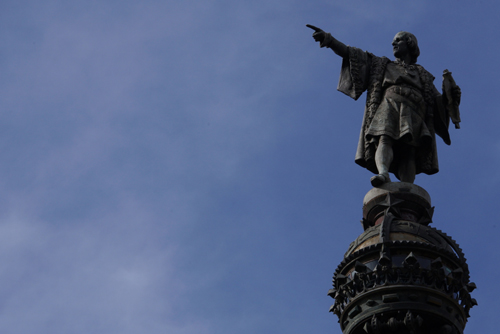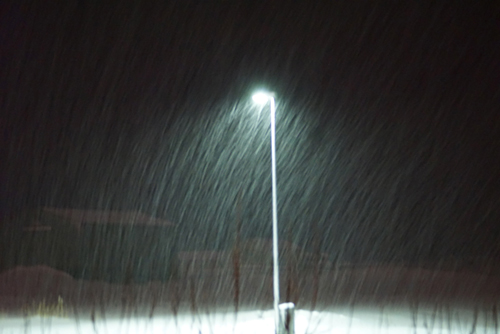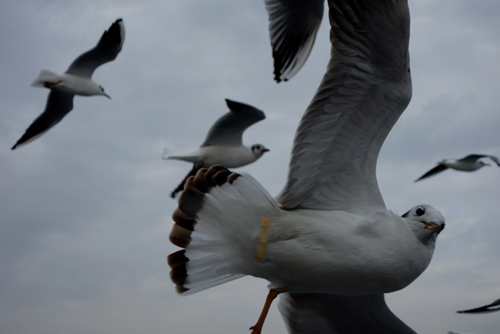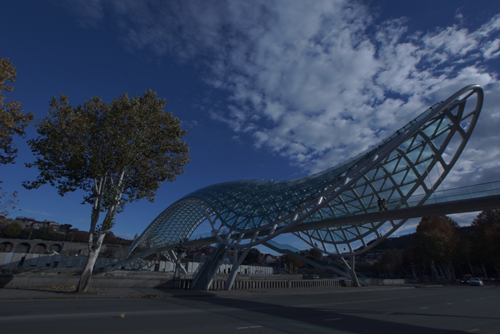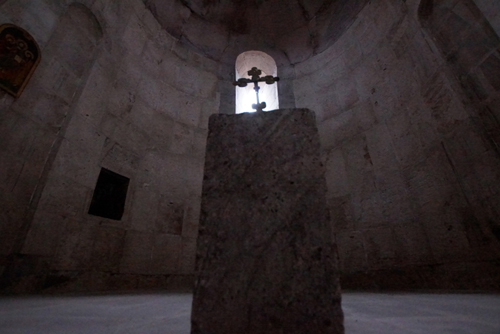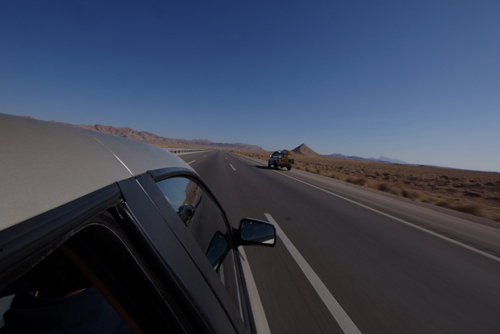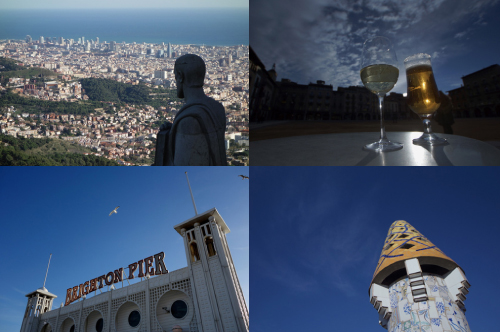
We arrived in Barcelona in early December, with no plans other than catching up with Evan, Stephanie, Hayden and Andrea.
We did manage to squeeze in some sightseeing in Barcelona, pre and post Christmas, and then in Paris, on the way to the UK.
In London we spent time, both before and after our Christmas trip to Iceland.
This blog and the accompanying photos is a hotchpotch of miscellaneous sites and experiences from these various trips.
Barcelona, December 2014.
I have been to Mount Tibidabo a number of times but never to the top of the Temple Expiatori del Sagrat Cor. This is a Roman Catholic church and minor basilica located on the summit and visible from everywhere around the city.
The view of Barcelona from Tibidabo is always spectacular, especially on a clear day. This particular day was clear but very cold and the views past the statues of the twelve Apostles gave a new perspective to one of my favourite cities.
Paris, December 2104.
We took the fast train to Paris and spent two nights in a small hotel in the Montmartre area.
The hotel was small as were the rooms.
We spent most of the time walking around soaking up the pre Christmas Parisian atmosphere.
One highlight was a stroll along the Promenade Plantée, a disused elevated railway track.
London, December 2014.
London was the next stop with just enough time to buy a few Christmas gifts to take to Iceland.
The hotel room here was smaller that the one in Paris – I didn’t think this was possible. I wrote in my hotel review that there wasn’t enough room to ‘swing a budgie’. I think this description may have been lost on many.
The lights in London were better and brighter than Paris. This could have something to do with the fact that they were sponsored.
The Regent Street lights not only promoted the festive season but also the latest version of the annoyingly stupid, Night at the Museum, ‘Secret of the Tomb’
We spent a pleasant afternoon in Harrods where most people seemed to be like us, looking rather than shopping.
Then it was off to Iceland for Christmas.
London 2014/15.
We returned to London to celebrate the New Year with Denis and Martine, our friends from Switzerland.
We rented an apartment in Canary Wharf, which turned out to be a great springboard for some long London walks.
And it was also a lot larger than the hotels we had been experiencing.
We strolled along the Thames, Camden Canal, Hyde Park and the Houses of Parliament and visited a couple of museums.
This was punctuated by frequent stops at London pubs.
After the New Year we had two cultural experiences. These were both photographic exhibitions that were poles apart, as far as subject matter and the way in which they were curated.
The first was at the Tate Modern and titled ‘Conflict Time Photography. This showed a large collection of photos that were taken after various conflicts, covering the 150 years since photography was invented. The exhibition was divided into time periods and covered the events seconds after, weeks after, months after and even decades after.
The second exhibition was at the Queen’s Gallery, Buckingham Palace and titled ‘Cairo to Constantinople, Early Photographs of the Middle East’. This was the work of the Royal Photographer, Francis Bedford (1815-1894) and chronicled the four month journey that the then Prince of Wales (later King Edward) took in 1862.
The Prince toured Egypt, Palestine, the Holy Lands, Syria, Lebanon, Turkey and Greece. It was interesting to see some of the places we had seen in 2010, 150 years later.
Our passports were groaning under the weight of stamps and visas. So much so, that we were forced to get them renewed.
We had to wait to get an appointment at Australia House and this gave us enough time for a side trip to Brighton.
Brighton by the sea 2015.
A walk along the famous pier, with its collection of bars, restaurants and amusement arcades gave us a real feel for this very British seaside resort.
Our hotel was right on the ‘front’ so we upgraded to get a room with a view. This was wonderful for our first day, as we could see the sun setting over the channel. It was a waste of money for the remainder of our stay as, in typical English fashion, the weather turned sour.
Our recent strategy has been, when it rains visit a shopping centre, and as Churchill Square was just around the corner we went there for a few hours.
The one place we did want to visit was the Brighton Pavilion, with its amazing history and faux Indian architecture, combined with Chinese interior design. The eccentricities of the British are encapsulated in this bizarre monument to King George IV.
On our last day we enjoyed a long Sunday lunch in an English pub, with excellent English ale, Spanish wine and typical British fare.
Then it was back to London for our passport interview. We paid for the quick service, to get our passports processed in three days. This was far cheaper than staying in a small London hotel for three weeks.
Then clutching our virgin passports we headed back to Barcelona. On arrival they were duly stamped on the first page – a good start to 2015.
Barcelona 2015.
Having seen all the significant sites around the city, we made it a plan to walk, rather than take the metro, to some of the places we had already visited. By doing this we would hopefully see some new things along the way.
We hiked to the top of Montjuic and back, twice.
On our first trip we walked around the fort, and the second time we visited the Botanical Gardens and the Montjuïc Cemetery.
Another day we visited the Barcelona Pavilion. This was the German stand for the 1929 International Exhibition and designed by Ludwig Mies van der Rohe (1886-1969). It’s a landmark building in modern architecture, using a very minimalist approach in its design.
Featured in the building, both then and now, is the Barcelona Chair, also designed by Ludwig Mies van der Rohe, with Lilly Reich (1885-1947).
The Barcelona Pavilion is very close to the Museu Nacional d’Art de Catalunya, so we spent a pleasant couple of hours there. This was made even more enjoyable by the fact that on Saturday afternoons, it’s fee.
Lacking a bit of Catalan culture we decided to visit Casa Batlló.
This is one of the most famous of the Antoni Gaudí houses in Barcelona, that was remodeled in 1905 on an existing building. Casa Batlló is privately owned and the commentary is much more commercial than in the state owned properties.
Despite the hard sell to buy at the gift shop, Casa Batlló was yet another exquisitely designed Gaudí masterpiece.
We also spent a very pleasant afternoon at the Palau Güell that was built between 1886 and 1888. This mansion was built for the extremely rich industrial tycoon, Eusebi Güell and is situated in the Raval district, very close to where we stayed.
It has been completely renovated in recent years and is a showcase of Gaudí’s early work. It highlights his use of the parabolic arch in the windows, fireplaces and the facade. Eusebi Güell was a main sponsor of Gaudí and even at the dawn of his career, believed in his talents.
Another who believed that Gaudí would prove to be a modern master was his university professor, Elies Rogent (1821-1897) who apparently wrote on Gaudí’s diploma, “We have given this title to a madman or a genius, only time will tell.”
We discovered another of Gaudi’s masterpieces, this one by accident, as we were wandering through the Gràcia area. Casa Vicens was another of his earlier works and built for the industrialist Manuel Vicens between 1883-1889. It was made a UNESCO World Heritage Site in 2005 and is only able to be viewed from the outside.
Casa Vicens shows the Moorish influence on Gaudi’s work, with red brick and an abundance of ceramic tiles. Manuel Vicens owned a tile and brick company, so it’s no surprise that Gaudi favoured these materials.
There were many architects in the Art Nouveau period but Gaudí stands out and being one of the most influential and creative minds of all time.
So much so, that the city of Barcelona continues the Gaudí tradition in the way they encourage new and exciting architecture. Even the design of street furniture in local parks and gardens seems to have been influenced by the spirit of his genius.
We enjoyed our ‘long Sunday lunch’ in Brighton so much, that we decided to make it a ritual.
Sitges.
We took a train ride 35km south down the coast to Sitges.
This is a beautiful coastal town overlooking the Mediterranean.
Our primary reason for the trip was lunch but there were some good opportunities to take some snaps.
My serious cameras hadn’t been out of their bag since Iceland so I almost needed a refresher course.
The Church of Saint Bartolomeu and Santa Tecla sits on top of a large rocky outcrop that divides the coastline. This dominates the scenery and seems to appear in most of my shots.
Barceloneta.
Another Sunday, another lunch, this time down on the beach at Barceloneta.
We walk down to the beach via the Three Chimneys Park on the Parallel. The authorities in Barcelona seem to have a love of preserving old chimneys.
Where we lived in Montgat, in 2012, there were chimney stacks remaining from industrial revolution factories – long after the factories had disappeared. Then there are the Three Chimneys in Sant Adria del Besos. Originally built for a giant thermoelectric plant, they are now just a landmark that dominates the skyline.
After a wonderful lunch, outside and overlooking the Mediterranean we wandered down to watch a group of Slackliners – this is a type of gymnastics on a loose tight rope.
Their skills were amazing.
Vic.
Having lunch on Sunday was becoming a habit. This time we took the train 60km north to Vic.
This is a medium size town with a long history dating back to Roman times.
The highlight for me was the Roman temple which dates from the second century AD. It wasn’t unearthed until 1882 after it was discovered beneath the Castle of els Montcada. The temple was in excellent condition with only the portico needing major reconstruction.
We were completely at odds with the locals. We had coffee when they were drinking beer and wine. The opposite was the case in the late afternoon.
The Plaça Major is the centre of Vic, with a huge earthen rectangle surrounded by a mixture of colonnaded buildings. The only restaurants and bars that were open on this chilly Sunday afternoon faced west, making the most of the winter sun.
Raval.
After our travels in Paris, the UK and Iceland we returned to Barcelona, as we needed to stop, take stock and rejuvenate.
We had been travelling for over five months and needed to formulate a plan for the future.
Through Ev, Steph, Hayden and Andrea we had discovered the wonders or AirBnB, so we decided to give it a go.
We ended up in Raval.
Now this is a much maligned area of Barcelona, having been the centre of drugs and prostitution and now containing a large proportion (over 47%) of residents with overseas backgrounds.
We have found Raval to be one of the highlights of our trip, as it’s vibrant colourful and very entertaining. It offers a far richer experience than you normally find in the more sanitised tourist area of this wonderful city.
Raval is an area that is upwardly mobile, to use a hackneyed seventies expression. There is an ever increasing number of trendy restaurants and bars as well as ‘vintage’ clothing shops popping up at a frantic rate.
The Sant Antoni market, built between 1872 and 1882, in is in the midst of redevelopment and will be a focal point of this exciting part of Barcelona.
Raval also has art, and in particular a wonderful sculpture titled, ‘El gato del Raval’ by Fernando Botero. He’s the same artist who had several similar pieces in the Cascade in Yerevan, Armenia.
Like the Gothic quarter, frequented by the tourist hoards, Raval is a labyrinth of lanes and alleys. The big difference being that there are real people here, living and working, without any reliance on the tourist dollar.
There are no postcards for sale in Raval.
I am certain that there are more hairdressers or peluqueros here than any other place on earth. There are at least six within a hundred meters of our apartment and they are all offering a men’s haircut for €4, about AU$5.90.
Ironically, in a country that prides itself on its jamón (ham), there is also an abundance of Halal butchers.
Many of the local mini marts and a number of the bars and restaurants are run by the local muslims, yet many of them serve or sell alcohol.
Raval is a area of paradoxes and that’s what makes it such an exciting place to stay.
Our last day in Barcelona.
For six weeks we had been promising ourselves a visit to the Parc del Laberint d’Horta.
This large garden complex, situated on the outskirts of the city, is located in the former estate of the Desvalls family. It was built during the 18th and 19th centuries and featuring a rather challenging maze.

